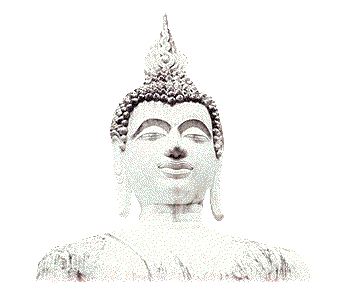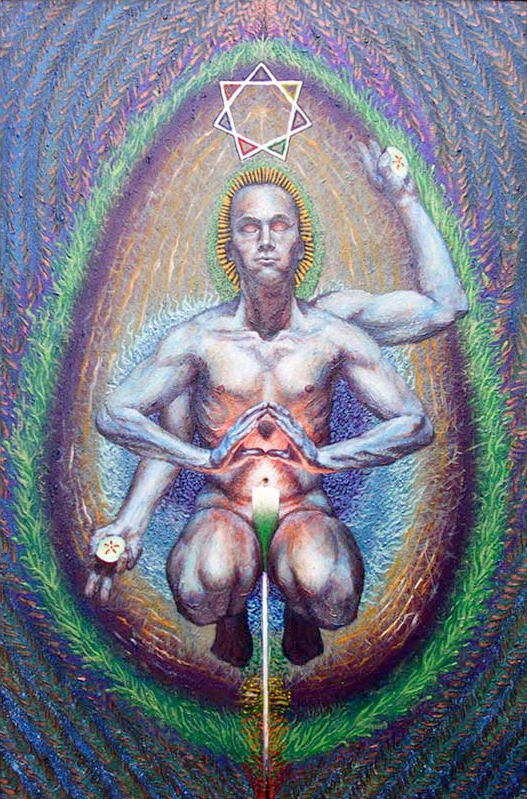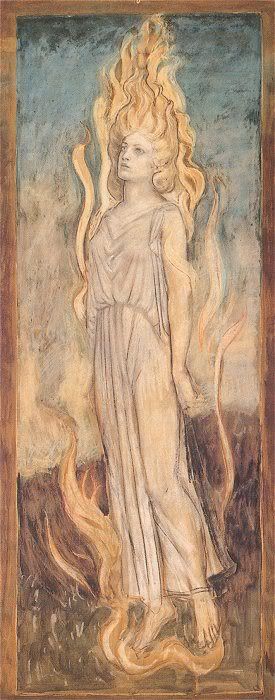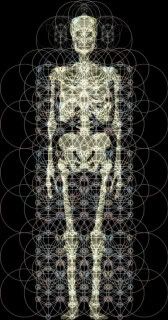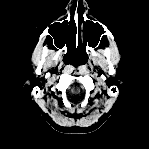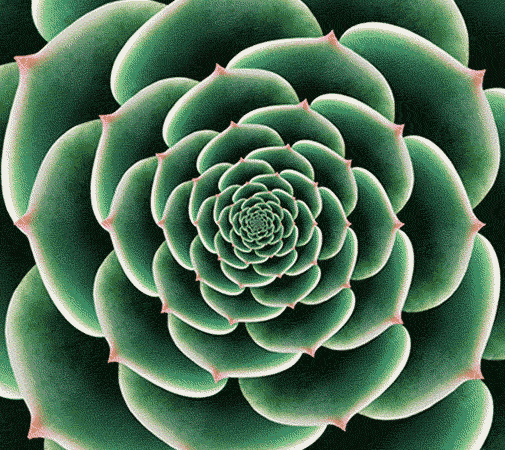In strict terms, the original Star Fire was the lunar essence of the Goddess, but even in an everyday mundane environment, menstruum contains the most valuable endocrinal secretions, particularly those of the pineal and pituitary glands. The brain's pineal gland in particular was directly associated with the Tree of Life, for this tiny gland was said to secrete the very essence of active longevity, referred to as soma - or as the Greeks called it, ambrosia.
In mystic circles, the menstrual flow-er (she who flows) has long been the designated flower, and is represented as a lily or a lotus. Indeed, the definition 'flow-er' is the very root of the modern word flower. In ancient Sumer, the key females of the royal succession were all venerated as lilies, having such names as Lili, Luluwa, Lilith, Lilutu and Lillette.
In pictorial representation, the Messianic Dragon bore little relation to the winged, fire-breathing beast of later western mythology. It was, in essence, a large-jawed serpent with four legs - very much like a crocodile or a monitor. This was the sacred Messeh whose name was Draco. This sovereign beast was a divine emblem of the Egyptian pharaohs, a symbol of the Egyptian Therapeutate in Karnak and Qumrân, while also being the Bistea Neptunis sea-serpent of the descendant Merovingian Fisher Kings in Gaul.
In old Hebrew texts references to serpents are made by use of the word nahash (from the stem NHSH), but this does not relate to serpents in the way that we might perceive them as venomous snakes. It relates to serpents in their traditional capacity as bringers of wisdom and enlightenment - for the word nahash actually meant 'to decipher', or 'to find out'. Serpents, in one form or another, were always associated with wisdom and healing - with the Trees of Life and Knowledge being customarily identified with serpents. Indeed the insignia of many of today's medical associations is precisely this image of a serpent coiled around the Plant of Birth - a depiction shown in the reliefs of ancient Sumer to be Enki's own personal emblem.
Interestingly, though, another common emblem for medical relief organizations depicts two coiled serpents, spiralling around the winged caduceus of Hermes the magician. In these instances, the true symbolism of the Star Fire ritual is conveyed and this symbol can be traced back to the very origins of the alchemical mystery schools and gnostic institutions. The records explain that the central staff and entwined serpents represent the spinal cord and the sensory nervous system. The two uppermost wings signify the brain's lateral ventricular structures. Between these wings, above the spinal column, is shown the small central node of the pineal gland.
The combination of the central pineal and its lateral wings has long been referred to as the Swan and in Grail lore (as in some Yogic circles) the Swan is emblematic of the fully enlightened being. This is the ultimate realm of consciousness achieved by the medieval Knights of the Swan - as epitomized by such chivalric figures as Perceval and Lohengrin.
The pineal is a very small gland, shaped like a pine-cone. It is centrally situated within the brain, although outside the ventricles, and not forming a part of the brain-matter as such. About the size of a grain of corn, the gland was thought by the 17th-century French optical scientist, René Descartes, to be the seat of the soul - the point at which the mind and body are conjoined. The ancient Greeks considered likewise and, in the 4th century BC, Herophilus described the pineal as an organ which regulated the flow of thought.
In the days of ancient Sumer, the priests of Anu (the father of Enlil and Enki) perfected and elaborated a ramifying medical science of living substances with menstrual Star Fire being an essential source component. In the first instance, this was pure Anunnaki lunar essence called Gold of the Gods, and it was fed to the kings and queens of the Dragon succession. Later, however, in Egypt and Mediterranea, menstrual extracts were ritually collected from sacred virgin priestesses who were venerated as the Scarlet Women. Indeed, the very word 'ritual' stems from this practice, and from the word ritu (the redness), which defined the sacred ceremony.
Hormonal supplements are, of course, still used by today's organo-therapy establishment, but their inherent secretions (such as melatonin and serotonin) are obtained from the desiccated glands of dead animals and they lack the truly important elements which exist only in live human glandular manufacture.
In the fire symbolism of ancient alchemy, the colour red is synonymous with the metal gold. In some traditions (including the Indian tantras), red is also identified with black. Hence, the goddess Kali is said to be both red and black. The original heritage of Kali was, however, Sumerian, and she was said to be Kalimâth, the sister of Cain's wife Luluwa. Kali was a primary princess of the Dragon house and from her Star Fire association she became the goddess of time, seasons, periods and cycles.
In the early days, therefore, the metals of the alchemists were not common metals, but living essences, and the ancient mysteries were of a physical, not a metaphysical, nature. Indeed, the very word 'secret' has its origin in the hidden knowledge of glandular secretions. Truth was the ritu, from which stems not only ritual, but also the words rite, root and red. The ritu, it was said, reveals itself as physical matter in the form of the purest and most noble of all metals: gold, which was deemed to represent an ultimate truth.
Just as the word secret has its origin in the translation of an ancient word, so too do other related words have their similar bases. In ancient Egypt, the word amen was used to signify something hidden or concealed. The word occult meant very much the same: 'hidden from view' - and yet today we use amen to conclude prayers and hymns, while something occult is deemed sinister. In real terms, however, they both relate to the word secret, and all three words were, at one time or another, connected with the mystic science of endocrinal secretions.
Since Kali was associated with black, the English word 'coal' (denoting that which is black) stems also from her name via the intermediate word kol. In the Hebrew tradition, Bath-Kol (a Kali counterpart) was called the Daughter of the Voice, and the voice was said to originate during a female's puberty. Hence, the womb was associated with the enigmatic voice and Star Fire was said to be the oracular Word of the Womb.
The womb was, therefore, the 'utterer', or the uterus.
The Scarlet Women were so called because of their being a direct source of the priestly Star Fire. They were known in Greek as the hierodulai (sacred women) - a word later transformed (via medieval French into English) to 'harlot'. In the early Germanic tongue they were known as horés, which was later Anglicised to 'whores'. However, the word originally meant, quite simply, 'beloved ones'. As explained in good etymological dictionaries, these words were descriptions of high veneration and were never interchangeable with such definitions as prostitute or adulteress. Their now common association was, in fact, a wholly contrived strategy of the medieval Roman Church in its bid to denigrate the noble status of the sacred priestess.
The withdrawal of knowledge of the genuine Star Fire tradition from the public domain occurred when the science of the early adepts and later Gnostics was stifled by the forgers of historic Christianity. A certain amount of the original gnosis (knowledge) is preserved in Talmudic and Rabbinical lore but, in general terms, the mainstream Jews and Christians did all in their power to distort and destroy all traces of the ancient art.
In addition to being the Gold of the Gods, the Anunnaki menstruum was also called the Vehicle of Light, being the ultimate source of manifestation and, in this regard, it was directly equated with the mystical Waters of Creation - the flow of eternal wisdom. It was for this reason that the Rosi-Crucis (Cup of the Waters) became the Mark of Cain and the subsequent emblem of the kingly succession. It was said that the Light remained quite dormant in a spiritually unawakened person, but that it could be awakened and motivated by the spiritual energy of self-will and by constant self-enquiry. This is not an obvious mental process, but a truly thought-free consciousness: a formless plain of pure being or knowingness.
{excerpt from Genesis of the Grail Kings by Sir Lawrence Gardener}


